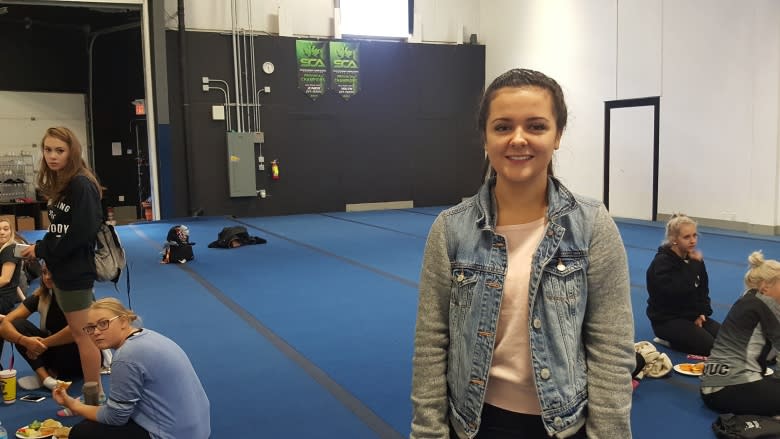'It's not just rah rah': Sask. cheerleaders work to smash stereotypes as sport's popularity grows
When Olivia Bocian tells people she is a cheerleading coach, she says many of them don't understand what she really does.
"It's not just all 'rah rah' running around a football game," said the Weyburn coach on Sunday.
Bocian was one of more than 80 cheerleading coaches from across Saskatchewan gathered in Saskatoon this weekend for the annual Saskatchewan Cheerleading Association conference.
Association president Jennifer Ritchie said one of the biggest issues being discussed at the conference was how to break down misconceptions about the sport.
"I think cheerleaders get a bad reputation and stereotype," said Ritchie.
"That comes from movies … and that's really not what our sport is about."
Instead, Ritchie said cheerleading was focused on training and athleticism in a team environment.
The opportunity to apply her dance background in a team environment was the main reason Ritchie originally joined the sport.
She became a member of the Saskatchewan Roughriders cheer team and later became the coach.
Ritchie now runs her own dance studio and is the head coach and choreographer for the Crush dance team.
She said the sport is growing in Saskatchewan, with more than 2500 athletes across the province.
Earlier this year, the province sent five teams to the Cheerleading Worlds Championship in Florida. It was the biggest Saskatchewan cohort ever to compete.
Sandra Horne, the head coach for PACE All-Star Cheerleading in Prince Albert, said the number of teams competing in provincial championships has grown from about 25 to almost 100 in less than 15 years.
She said she has seen a shift in the sport.
"I think a lot of people still associate cheerleading with standing on the sidelines and cheering for a team," she said.
"Whereas I find that the motivation has gone more towards competitive cheerleading … not so much that they're on the sidelines anymore."
She said there are also efforts to bring more boys into the sport, saying that stigma still exists.
Ritchie added that the sport is also growing because athletes no longer have to wait until high school to join a cheer team. Clubs have opened up the sport to children as young as three.
"We really think there's a bigger opportunity out there as people get to learn more about our sport," said Ritchie.
"We have the leaders within our industry come together at this conference and talk about how we are going to do that."




